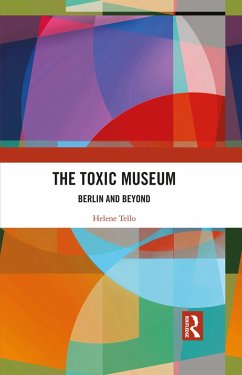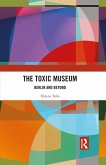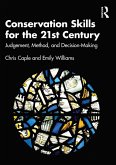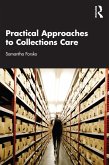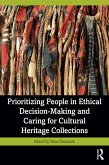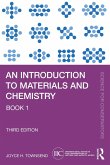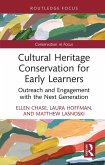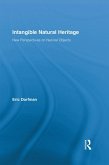42,95 €
42,95 €
inkl. MwSt.
Sofort per Download lieferbar

21 °P sammeln
42,95 €
Als Download kaufen

42,95 €
inkl. MwSt.
Sofort per Download lieferbar

21 °P sammeln
Jetzt verschenken
Alle Infos zum eBook verschenken
42,95 €
inkl. MwSt.
Sofort per Download lieferbar
Alle Infos zum eBook verschenken

21 °P sammeln
- Format: PDF
- Merkliste
- Auf die Merkliste
- Bewerten Bewerten
- Teilen
- Produkt teilen
- Produkterinnerung
- Produkterinnerung

Bitte loggen Sie sich zunächst in Ihr Kundenkonto ein oder registrieren Sie sich bei
bücher.de, um das eBook-Abo tolino select nutzen zu können.
Hier können Sie sich einloggen
Hier können Sie sich einloggen
Sie sind bereits eingeloggt. Klicken Sie auf 2. tolino select Abo, um fortzufahren.

Bitte loggen Sie sich zunächst in Ihr Kundenkonto ein oder registrieren Sie sich bei bücher.de, um das eBook-Abo tolino select nutzen zu können.
The Toxic Museum examines the use of pesticides in German museum collections at the end of the 19th and early 20th centuries.
- Geräte: PC
- mit Kopierschutz
- eBook Hilfe
Andere Kunden interessierten sich auch für
![The Toxic Museum (eBook, ePUB) The Toxic Museum (eBook, ePUB)]() Helene TelloThe Toxic Museum (eBook, ePUB)42,95 €
Helene TelloThe Toxic Museum (eBook, ePUB)42,95 €![Conservation Skills for the 21st Century (eBook, PDF) Conservation Skills for the 21st Century (eBook, PDF)]() Chris CapleConservation Skills for the 21st Century (eBook, PDF)35,95 €
Chris CapleConservation Skills for the 21st Century (eBook, PDF)35,95 €![Practical Approaches to Collections Care (eBook, PDF) Practical Approaches to Collections Care (eBook, PDF)]() Samantha ForskoPractical Approaches to Collections Care (eBook, PDF)33,95 €
Samantha ForskoPractical Approaches to Collections Care (eBook, PDF)33,95 €![Prioritizing People in Ethical Decision-Making and Caring for Cultural Heritage Collections (eBook, PDF) Prioritizing People in Ethical Decision-Making and Caring for Cultural Heritage Collections (eBook, PDF)]() Prioritizing People in Ethical Decision-Making and Caring for Cultural Heritage Collections (eBook, PDF)41,95 €
Prioritizing People in Ethical Decision-Making and Caring for Cultural Heritage Collections (eBook, PDF)41,95 €![An Introduction to Materials and Chemistry (eBook, PDF) An Introduction to Materials and Chemistry (eBook, PDF)]() Joyce H. TownsendAn Introduction to Materials and Chemistry (eBook, PDF)34,95 €
Joyce H. TownsendAn Introduction to Materials and Chemistry (eBook, PDF)34,95 €![Cultural Heritage Conservation for Early Learners (eBook, PDF) Cultural Heritage Conservation for Early Learners (eBook, PDF)]() Ellen ChaseCultural Heritage Conservation for Early Learners (eBook, PDF)21,95 €
Ellen ChaseCultural Heritage Conservation for Early Learners (eBook, PDF)21,95 €![Intangible Natural Heritage (eBook, PDF) Intangible Natural Heritage (eBook, PDF)]() Intangible Natural Heritage (eBook, PDF)59,95 €
Intangible Natural Heritage (eBook, PDF)59,95 €-
-
-
The Toxic Museum examines the use of pesticides in German museum collections at the end of the 19th and early 20th centuries.
Dieser Download kann aus rechtlichen Gründen nur mit Rechnungsadresse in A, B, BG, CY, CZ, D, DK, EW, E, FIN, F, GR, HR, H, IRL, I, LT, L, LR, M, NL, PL, P, R, S, SLO, SK ausgeliefert werden.
Produktdetails
- Produktdetails
- Verlag: Taylor & Francis eBooks
- Seitenzahl: 286
- Erscheinungstermin: 29. Dezember 2023
- Englisch
- ISBN-13: 9781003832201
- Artikelnr.: 69585799
- Verlag: Taylor & Francis eBooks
- Seitenzahl: 286
- Erscheinungstermin: 29. Dezember 2023
- Englisch
- ISBN-13: 9781003832201
- Artikelnr.: 69585799
- Herstellerkennzeichnung Die Herstellerinformationen sind derzeit nicht verfügbar.
Helene Tello has worked as a freelance senior conservator since 2020. After starting her career in 1980, she founded her own conservation studio in 1983. Later, she worked at the Vonderau Museum in Fulda, Germany, and was in charge of the Indian collections at the Ethnologisches Museum of the Staatliche Museen zu Berlin (Ethnological Museum of the National Museum in Berlin), Germany, from 1998 to mid-2020. There, she came across the topic of pesticides used previously on objects. She researches methods for decontaminating cultural assets that have undergone treatment, as well as safe handling practices for all who must handle them. Her expertise has been shared through numerous journal articles, teaching engagements, and lectures given at home and abroad.
PART I Social and political currents from the end of the 19th to the beginning of the 20th century; 1. The nation-state of Prussia, colonialism, and the age of industrialization; 2. The First World War and the hygiene movement; 3. The development of storage and plant protection; PART II Conservation of cultural property from organic materials for the prevention and control of harmful insects in museum collections; 4. Definition of pesticides; 5. Control of wood-destroying insects, textile pests, and harmful insects on natural history objects; 6. Protective and human toxic effect of historical pesticides and their suitability test; 7. Typological recording of pesticides PART III Collecting and preserving cultural assets in Berlin and beyond from the end of the 19th to the beginning of the 20th century; 8. Spatial conditions and personnel requirements for the preservation of collections at the Königliches Museum für Völkerkunde in Berlin from the end of the 19th to the beginning of the 20th century; 9. Explorers, collectors, and adventurers at the Königliches Museum für Völkerkunde in Berlin from the end of the 19th to the beginning of the 20th century; 10. Active ingredients and agents for the protection of persons and goods on expeditions; 11. Developments and experiments on pest control at the Königliches/Staatliches Museum für Völkerkunde in Berlin; 12. Knowledge transfer and product application from industry, commerce, and trade at the Königliches/Staatliches Museum für Völkerkunde in Berlin; 13. Orders and consequences for the use of pesticides at the Königliches/Staatliches Museum für Völkerkunde in Berlin from the end of the 19th to the beginning of the 20th century; 14. Knowledge transfer, exchange, and dissemination of knowledge at the national and international level; 15 Implementation of pest control measures in national and international context during the period under investigation
PART I Social and political currents from the end of the 19th to the beginning of the 20th century; 1. The nation-state of Prussia, colonialism, and the age of industrialization; 2. The First World War and the hygiene movement; 3. The development of storage and plant protection; PART II Conservation of cultural property from organic materials for the prevention and control of harmful insects in museum collections; 4. Definition of pesticides; 5. Control of wood-destroying insects, textile pests, and harmful insects on natural history objects; 6. Protective and human toxic effect of historical pesticides and their suitability test; 7. Typological recording of pesticides PART III Collecting and preserving cultural assets in Berlin and beyond from the end of the 19th to the beginning of the 20th century; 8. Spatial conditions and personnel requirements for the preservation of collections at the Königliches Museum für Völkerkunde in Berlin from the end of the 19th to the beginning of the 20th century; 9. Explorers, collectors, and adventurers at the Königliches Museum für Völkerkunde in Berlin from the end of the 19th to the beginning of the 20th century; 10. Active ingredients and agents for the protection of persons and goods on expeditions; 11. Developments and experiments on pest control at the Königliches/Staatliches Museum für Völkerkunde in Berlin; 12. Knowledge transfer and product application from industry, commerce, and trade at the Königliches/Staatliches Museum für Völkerkunde in Berlin; 13. Orders and consequences for the use of pesticides at the Königliches/Staatliches Museum für Völkerkunde in Berlin from the end of the 19th to the beginning of the 20th century; 14. Knowledge transfer, exchange, and dissemination of knowledge at the national and international level; 15 Implementation of pest control measures in national and international context during the period under investigation
